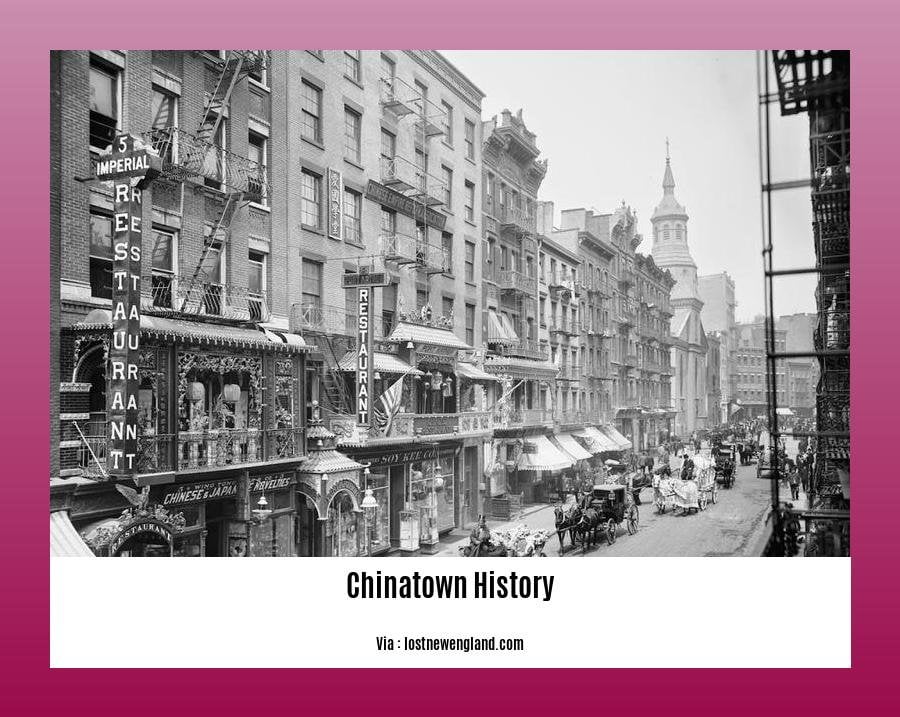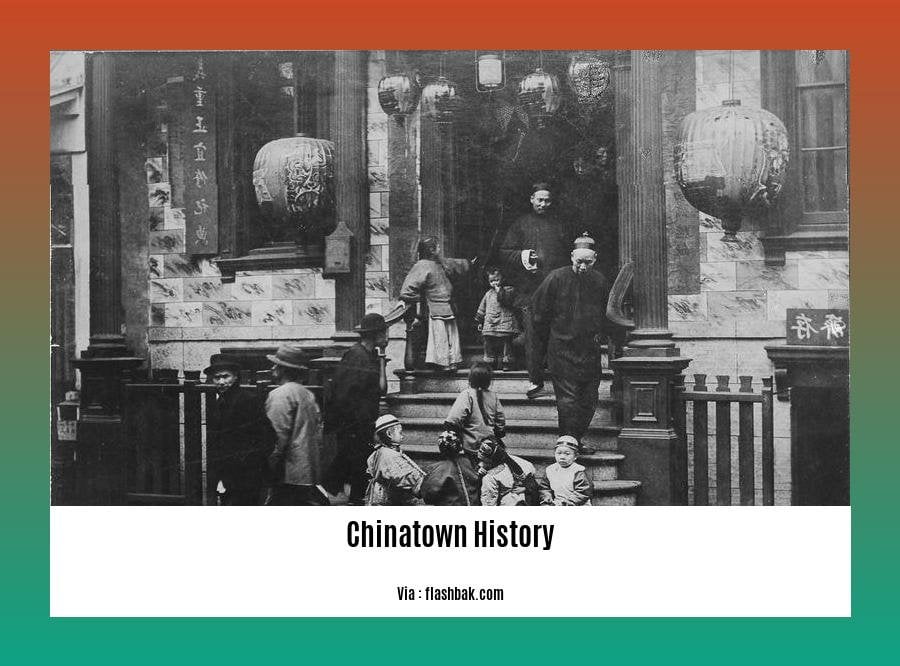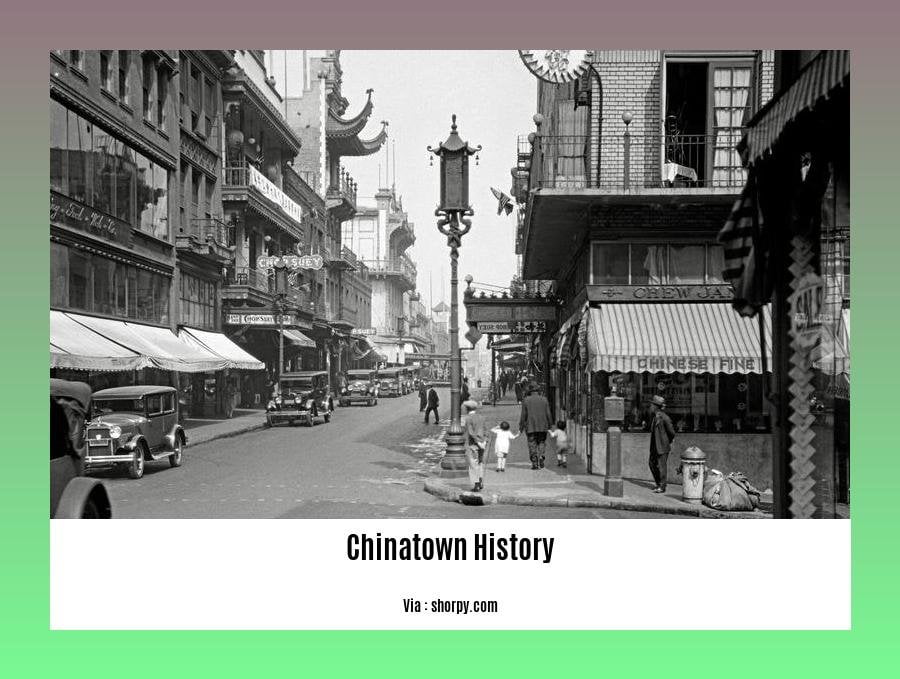Exploring the Colorful Tapestry of Calgary Chinatown: A Comprehensive History
Calgary Chinatown, one of the oldest communities in the city, is a captivating enclave that has preserved its rich heritage amidst the ever-changing landscape of urban development. This vibrant district, with its fascinating history, art, and culture, beckons visitors and locals alike to delve into its enticing offerings. In this comprehensive article, we will delve into the tapestry of Calgary Chinatown’s past, exploring its captivating history and shedding light on the challenges faced by this unprotected heritage. Join us on a journey through time, as we unveil the hidden treasures and enduring contributions of this remarkable community.
Key Takeaways:
- Calgary Chinatown has a history that dates back over 130 years, with the first Chinese settlement established in 1883.
- In June 1910, Chinatown was relocated to its permanent location on Centre Street along the Bow River.
- The current location of Calgary’s Chinatown was determined in 1910 after discussions and negotiations due to the demolition of the previous iteration by the new CPR station.
- Chinatown has remained an iconic and culturally significant community in Calgary, evolving and growing alongside the city itself.
- The Chinese Exclusion Act, which had halted Chinese immigration for over 20 years, was repealed in 1947, leading to a significant increase in Calgary’s Chinese population by 1967.
- Many newcomers chose to reside outside of Chinatown, contributing to the dispersion of the Chinese community throughout the city.
Calgary Chinatown History

Calgary Chinatown has a vibrant and rich history that spans over 130 years. This cultural community holds a special place in the city’s heart and has evolved alongside Calgary’s development. Let’s delve into the captivating tale of Calgary Chinatown and explore its significant milestones, challenges faced, and contributions to the city’s cultural tapestry.
Establishing a Home in Calgary
Calgary’s Chinatown was officially founded in 1883, marking the beginning of a long and enduring journey. Initially, it was a modest settlement, reflecting the aspirations and dreams of Chinese immigrants seeking opportunities in a new land. As the community grew, so did its influence, eventually becoming an integral part of Calgary’s social fabric.
Relocation and Determination
Throughout its history, Calgary’s Chinatown experienced relocations, with its current location on Centre Street along the Bow River solidified in June 1910. However, this move almost did not happen. The second iteration of Chinatown faced demolition to make way for the new Canadian Pacific Railway (CPR) station, prompting discussions led by the esteemed Ho Lem and a delegation of Chinese Calgarians.
A Tapestry of Challenges and Triumphs
Over the years, Calgary Chinatown encountered its fair share of challenges. The Chinese Exclusion Act, which had halted Chinese immigration for two decades, was finally repealed in 1947, opening the doors for increased cultural diversity in the city. This turning point contributed to a significant increase in Calgary’s Chinese population, with many newcomers choosing to reside outside of Chinatown.
An Evolving Cultural Gem
Despite changes and the growth of Calgary’s Chinese community, Chinatown remains a cultural gem. Its intricate tapestry intertwines traditions, businesses, and landmarks, providing visitors and residents with a captivating glimpse into Chinese culture. From vibrant festivals to traditional cuisine, Chinatown beautifully showcases the diversity and contributions of the Chinese community in Calgary.
Conclusion: A Living Tapestry of History
Calgary Chinatown’s history is a captivating tale of perseverance, resilience, and cultural significance. It stands as a testament to the enduring spirit of the Chinese community and its contributions to the development and cultural fabric of Calgary. Whether strolling down the vibrant streets, indulging in delectable cuisine, or participating in cultural festivities, Calgary Chinatown offers a unique and immersive experience that celebrates both the past and present.
Sources:
– City of Calgary – Chinatown
– Daily Hive – 130 Years in the Making: A Brief History of Calgary’s Chinatown
Check out these fun facts about the California desert region: california desert region fun facts. Discover the unique wonders and fascinating trivia about this incredible landscape.
Explore the interesting facts that make the California desert region so captivating: california desert region interesting facts. From its diverse wildlife to its breathtaking panoramas, there’s always something new to learn.
Curious about driving through Death Valley? Find out all you need to know here: can you drive through death valley. Uncover the secrets of this renowned desert destination and embark on an unforgettable road trip adventure.
Featured art and culture in Chinatown

Calgary Chinatown is not only a vibrant and historically rich community, but it also has a thriving art and cultural scene that showcases the uniqueness and creativity of its residents. From temporary art exhibits to captivating wall installations, there are numerous artistic expressions that add to the vibrancy of Chinatown and celebrate its cultural heritage.
The Chinese Cultural Centre, a cornerstone of Calgary Chinatown, serves as a hub for promoting art and culture within the community. The centre hosts a variety of temporary art exhibits that feature works by local and international artists, providing a platform for them to showcase their talent and perspectives. These exhibits often delve into the themes of Chinese history, traditions, and contemporary issues, allowing visitors to gain a deeper appreciation for the complexities of Chinese culture.
One notable example is the recent mural that combines a thousand years of history with Calgary’s heritage and vision. This captivating piece of art not only beautifies the streets of Chinatown but also serves as a visual representation of the intertwined history and cultural diversity of the community. It incorporates elements from Chinese history, such as the famous Silk Road and the Great Wall, while also incorporating Calgary’s landmarks, like the iconic Calgary Tower. This fusion of cultural symbols creates an engaging and thought-provoking artwork that captures the essence of Calgary Chinatown.
The integration of art in Calgary Chinatown goes beyond temporary exhibits and murals. The Chinatown Cultural Plan, a community-driven initiative, aims to recognize the history and contributions of Calgary’s Chinatown, honor its people and culture, and enhance visitor experiences. Through this plan, there is a focus on supporting cultural activations and events that showcase the art, music, dance, and theater that make up the diverse artistic tapestry of the community.
The City of Calgary has been instrumental in supporting these cultural activations, providing funding and resources to ensure that art and culture thrive in Chinatown. This support has allowed for the organization of festivals, performances, and workshops that showcase the talents of local artists and performers. By nurturing and supporting the creative expression of the community, the city ensures that the unique cultural heritage of Calgary Chinatown is preserved and celebrated.
In conclusion, art and culture play a significant role in Calgary Chinatown, enriching the community’s identity and bringing together people from various backgrounds. With a dynamic arts scene, the Chinese Cultural Centre’s temporary exhibits, and the city’s support for cultural activations, Chinatown continues to be a hub for creative expression and a testament to the rich tapestry of art and culture in Calgary.
Key Takeaways:
- Calgary Chinatown boasts a vibrant art and cultural scene that showcases the creativity and heritage of its residents.
- The Chinese Cultural Centre hosts temporary art exhibits that explore themes of Chinese history, traditions, and contemporary issues.
- The recently unveiled mural in Chinatown combines a thousand years of history with Calgary’s heritage and vision.
- The Chinatown Cultural Plan aims to honor the history and culture of Calgary Chinatown while enhancing visitor experiences.
- The City of Calgary provides support, including funding and resources, to promote cultural activations and events in Chinatown.
Sources:
– City of Calgary – Culture in Chinatown – The City of Calgary
– LiveWire Calgary – Chinatown mural combines thousand year history with Calgary heritage and vision
Unprotected Heritage
Calgary Chinatown, with its rich history and cultural significance, stands as a testament to the resilience and contributions of the Chinese community in the face of adversity. However, this vibrant neighborhood also faces the challenges of unprotected heritage, with the potential threats of development and neglect compromising its historical and cultural value.
A Story of Perseverance and Struggle
Calgary’s Chinatown emerged in 1883 when Chinese railway workers arrived from British Columbia, seeking opportunities in the growing city. Despite facing discrimination and the hardships of building a new life in a foreign land, these pioneers established a community that would become an integral part of Calgary’s identity. However, their heritage remains vulnerable, and it is our responsibility to protect it.
A Fragile Legacy
The journey of Calgary Chinatown has been marked by significant events that shaped its development. Devastating fires in 1886 forced the Chinese residents to relocate to a different area of the city, and the Chinese Immigration Act of 1923, also known as the Chinese Exclusion Act, hindered the growth of the community. These challenges have left their mark on the neighborhood, making it all the more crucial to safeguard its history.
Preserving the Past, Celebrating the Present
Calgary’s Chinatown experienced a resurgence when the Canadian Pacific Railway arrived, leading to significant growth in the early 20th century. The construction of the iconic Palliser Hotel in 1910 marked the establishment of the second Chinatown on Center Street, an area that still thrives today. This vibrant community holds within it stories of resilience, cultural heritage, and economic contributions worth protecting.
The Threat of Neglect and Development
Despite its significance, Calgary Chinatown remains an unprotected heritage site, leaving it vulnerable to the challenges of modern development. As the city expands and urban planning takes precedence, the historical fabric of this community risks erosion. These threats underscore the need for proactive efforts to ensure the preservation of Calgary Chinatown’s invaluable heritage.
Harnessing the Power of Advocacy
Preserving Calgary Chinatown’s heritage requires a collective effort from the community, government, and heritage organizations. By raising awareness and advocating for protective measures, we can safeguard the physical landmarks, stories, and intangible cultural practices that make this neighborhood unique. Supporting initiatives aimed at cultural revitalization and heritage conservation is vital in safeguarding Calgary Chinatown for future generations.
Key Takeaways:
- Calgary’s Chinatown is a testament to the resilience and contributions of the Chinese community in the face of discrimination and adversity.
- Historical challenges such as fires and immigration restrictions have shaped the development of Calgary Chinatown.
- The growth of Calgary Chinatown after the arrival of the Canadian Pacific Railway highlights its cultural and economic significance.
- The unprotected heritage of Calgary Chinatown faces threats from neglect and modern development.
- Preserving Calgary Chinatown’s heritage requires collective efforts from the community, government, and heritage organizations.
Sources:
– Daily Hive – History of Calgary Chinatown
– Lougheed House – Three Calgary Chinatowns
FAQ
Q1: What is the history of Calgary’s Chinatown?
A1: Calgary’s Chinatown has a history dating back to the arrival of Chinese railway workers from British Columbia in 1883. It experienced significant growth after the arrival of the Canadian Pacific Railway and the construction of the Palliser Hotel in 1910.
Q2: How did Calgary’s Chinatown evolve over time?
A2: Calgary’s Chinatown has evolved over time due to various factors, such as immigration restrictions and the Chinese Exclusion Act. The community has faced challenges, including the relocation of Chinatown and anti-Chinese hostility in Alberta. However, it remains an iconic place and cultural community in Calgary.
Q3: Where is Calgary’s Chinatown located?
A3: Calgary’s Chinatown is located along Centre Street, near the Bow River. Its current location was determined in 1910 after a delegation of Chinese Calgarians discussed the relocation to accommodate the construction of the new CPR station.
Q4: What is the significance of Calgary’s Chinatown?
A4: Chinatown in Calgary reflects the history, struggles, achievements, and values of Chinese people, making it a meaningful neighborhood for its residents and all Calgarians. It has contributed to the city’s cultural diversity and heritage.
Q5: What cultural resources and initiatives are available in Calgary’s Chinatown?
A5: Calgary’s Chinatown offers a range of cultural resources and initiatives, such as the Chinese Cultural Centre, which promotes cultural programs and serves the Chinese community. The City of Calgary also supports cultural activations in Chinatown, providing funding and resources for events and programming.












